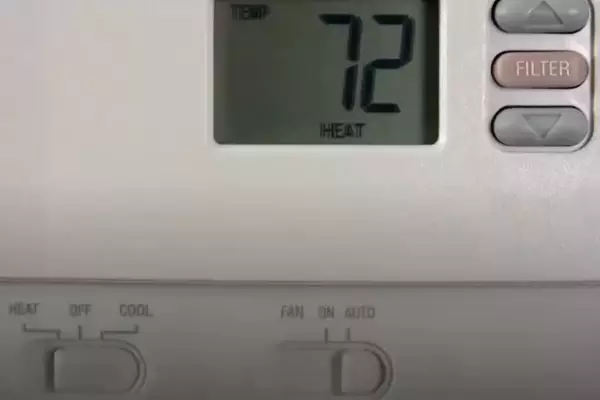Air conditioners have become an essential part of our lives, especially in regions where the temperature can skyrocket during summers. These machines are designed to maintain indoor comfort by cooling the air, but they come with various modes, each serving a distinct purpose.
Two of the most commonly used modes in air conditioners are the Cool and Dry modes. While they might seem self-explanatory, understanding their distinct functionalities can significantly enhance your comfort and reduce energy consumption.
Diving into the heart of air conditioning, both the Cool and Dry modes have their own set of pros and cons, determined by various factors such as the climate, personal comfort levels, and energy considerations.
Contents
Exploring AC Modes:
Brief on AC Modes
Modern air conditioners are equipped with multiple operational modes to cater to different requirements. Apart from the Cool and Dry modes, you might find modes like fan-only, heat, and auto. Each mode has a specific function, influencing the way the AC cools the room, consumes energy, and manages humidity.
Importance of Cool and Dry Modes
Cool and Dry modes are often the go-to choices for many homeowners. While the primary function remains to maintain comfort, the way they achieve this differs. Depending on the surrounding conditions and personal preferences, understanding when to use which mode can be a game-changer.

Air Conditioner: Cool Mode
Definition of Cool Mode
When you switch your air conditioner to Cool Mode, you’re essentially instructing the unit to function as a temperature reduction tool. This is the most common setting people think of when they hear “air conditioner.”
How Cool Mode Works
- Compressor Role: At the heart of the process is the compressor. In Cool Mode, the compressor works continuously, pumping the refrigerant, which absorbs the indoor heat.
- Refrigerant Cycle: As the refrigerant cycles through the system, it changes its state from gas to liquid. This phase change helps absorb and release heat, resulting in cooler air being released into the room.
- Fan Operation: Simultaneously, the indoor unit’s fan operates at a set speed (depending on your desired temperature). This fan pulls warm room air over the evaporator coils, where the heat is absorbed by the refrigerant, and then pushes the now cooled air back into the room.
- Thermostat Regulation: An integral component is the thermostat, which monitors the room’s current temperature. Once the ambient temperature matches the set temperature, the compressor is turned off. However, the fan may continue to run, ensuring even distribution of cool air.
Ideal Use of Cool Mode
Cool Mode is best suited for:
- Hot Days: Particularly during peak summer months when indoor temperatures rise significantly and you need rapid cooling.
- Quick Temperature Drop: If there’s a sudden spike in temperature or if the room has been exposed to sunlight and feels like a furnace, Cool Mode comes in handy.
- Occupied Rooms: When the room is frequently occupied by multiple people, generating more body heat, this mode is effective.

Air Conditioner: Dry Mode
Definition of Dry Mode
While the term “Dry Mode” might sound perplexing to some, it’s a mode designed more for comfort than actual cooling. In environments where humidity is more of an issue than heat, this mode reigns supreme.
How Dry Mode Works
- Compressor Operation: Unlike the Cool Mode, the compressor doesn’t run continuously. It operates in intervals, focusing more on removing moisture from the air than significantly lowering the room’s temperature.
- Condensation Process: As the humid air passes over the cold evaporator coils, moisture from the air condenses on these coils. This reduces the room’s humidity level, making it feel cooler and more comfortable.
- Slower Fan Speed: The fan speed in Dry Mode is generally slower. This aids in the condensation process, allowing more time for the humid air to interact with the cold coils, thus extracting more moisture.
- Drain Line: The condensed water accumulated on the evaporator coils is then drained out of the unit through a pipe, ensuring the room remains dry.
Ideal Use of Dry Mode
Dry Mode is particularly beneficial in:
- Rainy Seasons: Especially during monsoons or in areas with frequent rainfall, where the temperature might not be high, but the humidity levels are off the charts.
- Coastal Areas: Locations near the sea or oceans often have high humidity levels, making Dry Mode a preferred choice for residents.
- Night Time: During the night, especially in areas where temperature drops but humidity remains high, this mode helps in ensuring a comfortable sleep.

Differences Between Cool and Dry Mode
Energy Consumption
- Cool Mode: Due to the continuous operation of the compressor and the fan working at a relatively higher speed, the energy consumption in this mode is comparatively higher. However, the trade-off is a much quicker cooling effect.
- Dry Mode: Designed for efficiency, this mode’s intermittent compressor operation and slower fan speed ensure that less energy is consumed. It’s a gentle approach to creating a comfortable environment.
Cooling Speed
- Cool Mode: Offers instant relief by rapidly reducing room temperature.
- Dry Mode: The cooling effect is milder and gradual. The primary focus remains on reducing humidity, but a slight temperature drop is a welcome by-product.
Comfort Level
- Cool Mode: Provides a significant drop in temperature, making it ideal for those who prefer a cooler environment.
- Dry Mode: Offers a balance. While the temperature drop is not drastic, the noticeable reduction in humidity makes the environment more pleasant.
Appliance Wear and Tear
- Cool Mode: Given the constant operation of major components, this mode might exert the unit a bit more. However, modern ACs are built to withstand such continuous operations efficiently.
- Dry Mode: With its periodic operation, it exerts less strain on the appliance, potentially contributing to a longer lifespan.
Can You Use Dry Mode All Day?
Yes, and in fact, many do. Given its energy-efficient operation, using Dry Mode all day, especially in high-humidity conditions, can be both economical and comfortable. The consistent reduction in humidity without the aggressive temperature drop ensures the environment remains pleasant throughout.
Strategic Use of AC Modes
Climate Consideration
The climate is paramount when selecting the mode. On a scorching day, the Cool Mode is irreplaceable. However, on a damp day, where you feel more sticky than hot, Dry Mode is the way to go.
Personal Comfort
Everyone’s comfort zone varies. Some may find solace in the chilly embrace of the Cool Mode, while others may favor the balanced ambiance that the Dry Mode delivers.
Energy Conservation
Opting for the right mode not only dictates your comfort but also your energy bills. Being aware of the ambient conditions and adjusting the mode accordingly can lead to substantial energy savings, making your comfort sustainable.
Frequently Asked Questions
Does Dry Mode cool the room?
While its primary function is to reduce humidity, Dry Mode does provide a mild cooling effect.
Which mode is more energy-efficient, Cool or Dry?
Dry Mode is generally more energy-efficient as it operates the compressor intermittently and uses a slower fan speed.
Can I switch between Cool and Dry modes?
Absolutely. Depending on your comfort needs and the outside conditions, you can switch between the modes.
Conclusion
Air conditioners, with their diverse operational modes, offer a plethora of options for homeowners to choose from. Cool and Dry modes, each with their unique benefits, play a pivotal role in maintaining indoor comfort.
Being aware of their functionalities and strategically using them can not only enhance comfort but also lead to energy conservation. With a clear understanding, homeowners can ensure they get the best out of their air conditioning units.
